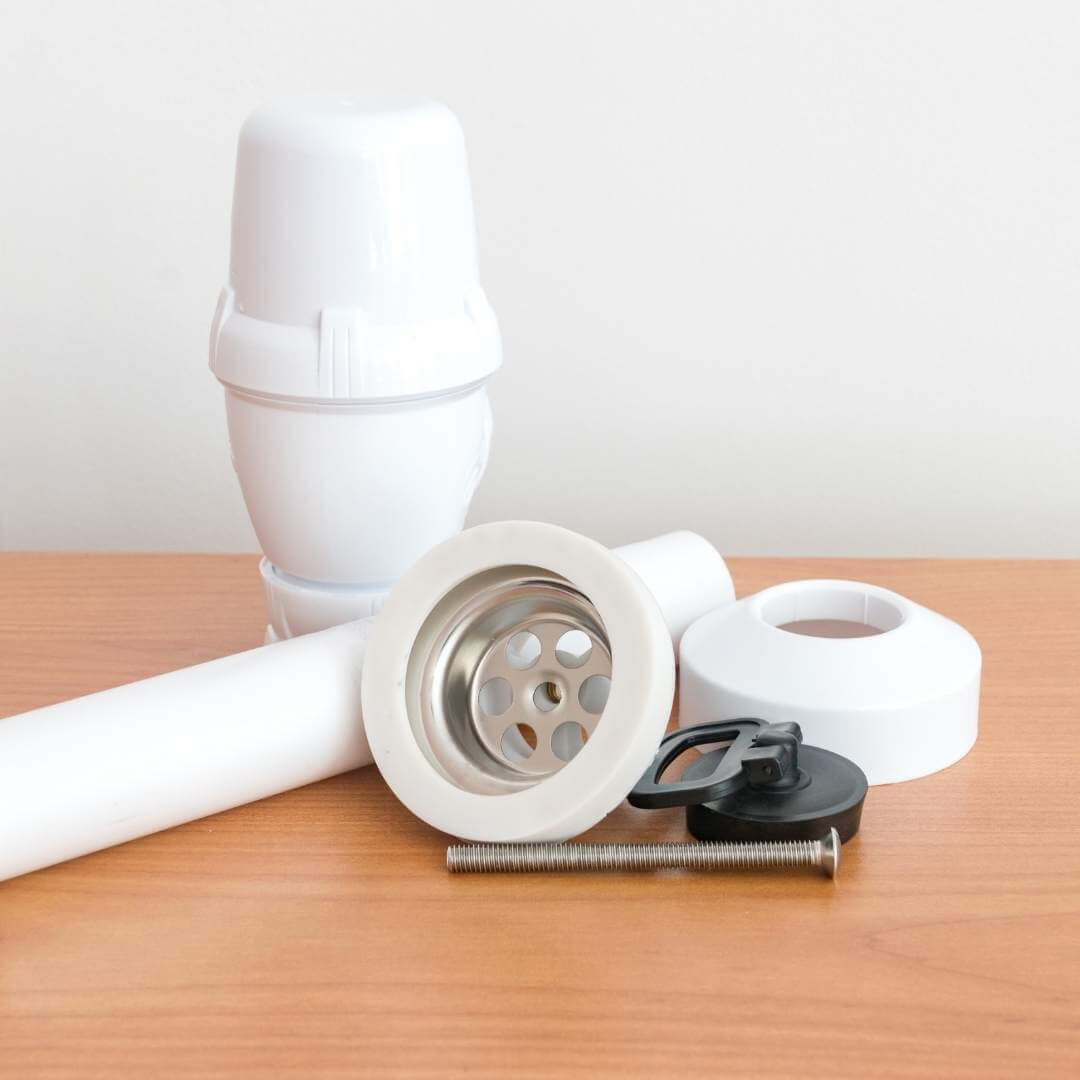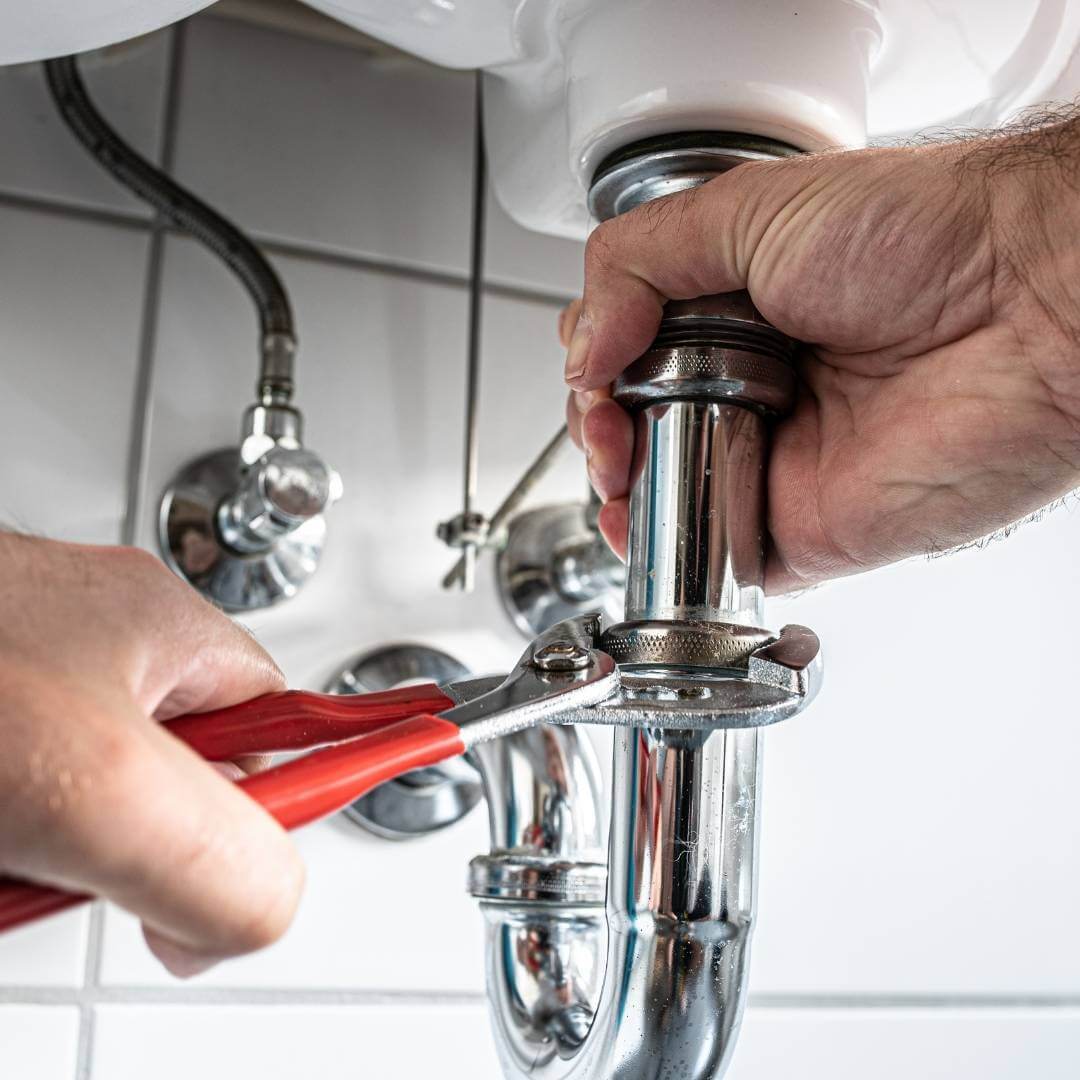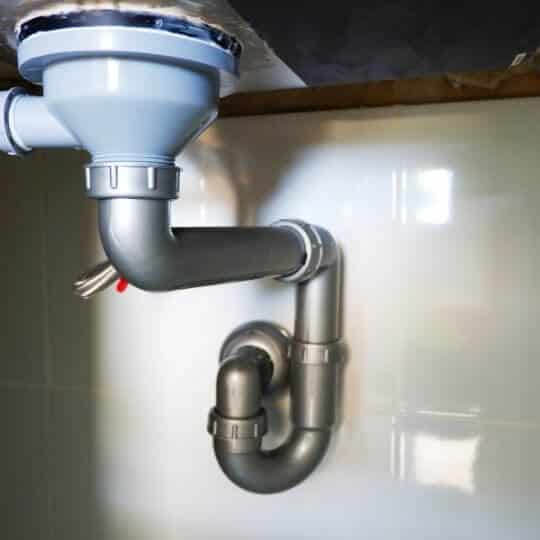Is your P trap lower than the drain pipe? If you’ve always wondered what those funny-looking pipes under your sink are for; then you’re in the right place.
Those pipes are called p-traps, and you’ll soon see how they play a vital role in your house. Also, if you’re remodeling a kitchen sink or bathroom, and you install a deeper sink that pushes the p-trap lower than the drain pipe, is this okay or not? In this article, were going to be looking at p-traps, their functions, and the proper ways to install them.
What Is A P-trap?

A P-trap is a u-shaped bend in the drainage pipe connecting a sink’s drain to a septic tank/municipal sewer system. P-traps are required on all plumbing fixtures, such as tubs, sinks, toilets, and showers. A p-trap should normally contain some amount of water in the downward curvature at every time. This trapped water is called the trap seal. [1]
P Trap Lower Than The Drain Pipe
The trap seal is measured from the crown weir- the highest point on the inside of the curve and the top of the trap dip. This distance will then show the maximum vertical depth of liquid the P-trap will hold.
These p-traps can come in either a one-piece or a two-piece design. Each time water from the plumbing fixture enters the trap; it flushes the previous water or solids while still leaving water in the trap to replace it. A p-trap prevents toxic gases like methane, carbon monoxide, nitrogen, and hydrogen sulfide from entering a home.
All of these gases can have toxic effects on your health. Methane can cause headaches, nausea, and even loss of consciousness. Hydrogen sulfide can trigger asthmatic attacks and also has a foul rotten egg odor. We all know that carbon monoxide and nitrogen can silently kill.
P-traps also make clogged drains easier to clean by keeping sediments, hair, and even jewelry within easy reach.
Difference Between S Trap And P Trap
An S trap is named after its shape, which forms an ”S”. Similarly, a P trap takes the shape of a ”P” when installed. Both traps do the same thing: to prevent harmful gases from entering your home. S traps are mostly found in older homes and often siphon away too much liquid, leaving the trap seal dry.
P traps are like the updated version of S traps and eliminate the siphoning problem. But you should know that a p-trap does not totally eliminate the chances of a dry trap, but it reduces the probability of such an incident occurring to the minimum.
A p-trap has two main features that prevent the siphoning of water. The first is a vented pipe. A p-trap is typically vented inside a wall and out through the roof to the outside air. This balances the air pressure inside the drain, making siphoning less likely. Siphoning usually requires negative pressure or a ‘sucking’ action.
Second, a waste arm extension is added to the drain side of the trap. This extended pipe significantly reduces the possibility of gravity pulling water through the pipe. The length of this extension needs to be two to two and a half times the size of the diameter of the pipe. For instance, a one-and-a-half-inch pipe needs at least a three-and-a-three-quarters-inch waste arm extension.
How To Transform An S-trap Into A P-trap
This will require the installation of a vent pipe and a waste arm extension that will connect the waste trap to the vent pipe and drain line. If a vent stack is unavailable, you can use an air admittance valve ( AAV). An AAV is a one-way valve that lets outside air come in but prevents sewer air from going out.
Once the waste arm and vent pipes have been installed, connect the trap to the fixture’s drain line and then to the waste arm extension. The waste arm connects to the vent and drain line using a wye connection
Remedy For A Dry Trap
As explained above, the reason for a dry trap is water evaporating in the trap. A simple solution is to pour water slowly down the drain to create a trap seal once again. Through evaporation, any trap, including the p-trap, can go dry over time. A rarely used sink can also develop a dry trap because of this evaporation.
How Far Below The Tub Drain Should The P-trap Be?
Plumbing codes govern the installation of p-traps on all wastewater connections. A few of those codes include;
- A p-trap must connect to the same size of drain outlet with a diameter of at least 1.5 inches.
- The international residential code mandates that the most vertical distance between the entry point to the p-trap and the sink drain is 24 inches.
- The horizontal distance between the fixture and the trap should be less than 30 inches.
- A trap seal should be at least 2 inches deep but at most 4 inches
- Only one trap can be installed per drain
Does The Height Of The P-trap Matter?

An incorrectly installed p-trap won’t work as effectively as designed. If your p-trap is installed too low, the water in it may evaporate, thereby eliminating the barrier against dangerous sewer gases. This will allow harmful gases to flow up the drain line into your home. A p-trap that is too low will also make it difficult to clean and service. UPC code makes it mandatory for the p-trap to be 6-18 inches above the floor level.
A P-trap height is measured by the vertical distance between the floor and the centerline of the trap arm. It is not measured using the u-bend of the p-trap. The trap arm is the straight pipe parallel to the floor that connects the U-bend to the main drain line.
Measure the distance between the underside of the trap arm and the floor. Then divide the trap arm’s diameter into two, and add half of this diameter to the measured distance for the most accurate measurement. For example, if you use a 2-inch pipe, measure the distance between the floor to the underside of the trap arm and add one inch to the measurement.
Can a P-trap Sit Lower Than A Drain Pipe?
The answer to this question will depend on your definitions. If the drain pipe you’re referring to is the sink drain, then yes! A p-trap cannot be higher than the drain entry. If you’re referring to the exit drain in the wall, also, yes! This is because the output level should always be higher than the input level to ensure that the water that flows in is trapped, creating a seal that prevents harmful gases from flowing upwards to the sink.
P Trap Lower Than The Drain Pipe
Essentially, ensure the p-trap is not higher than the drain exit because this creates an S-trap. An S-trap will act as a siphon, letting sewer gas into your house. Not only will this make your home smelly, but some gases are quite harmful and explosive. S-traps are illegal in all 50 states because of their poisonous qualities.
Can A P-trap Be Too Low?
A p-trap should not be too low; it should be 6-8 inches long. When a p-trap is too low, water will not gain enough momentum to push sediments away from the p-trap. This will lead to a hindrance to the free flow of water.
On the other hand, if your p-trap is more than 24 inches, you won’t get good drainage either because there will be too much momentum/velocity pushing out all the water from the p-trap rendering the entire device useless.
What To Do If A Sink Is Lower Than The Drain

A sink that is too low or a drain pipe that is too high will cause slow drainage. As a result, the water and waste products will take longer to pass through the drain pipe. But no worries! You can fix the issue in three simple ways.
- Build a reversing p-trap or use an alternative to the p-trap. But you will need to contact a professional for the installation of these devices, and it will also cost extra.
- A HepvO waterless valve can be installed and act in place of a p-trap
- A grease trap can also prevent grease from getting into the system and causing it to clog.
Water will not flow uphill. So if your sink is lower than the waste drainage pipe, your sink will not drain properly until you lower the connection in the wall. Unfortunately, that means you will have to break open the wall and make whatever modifications are necessary to achieve a downward slope from the sink to the outlet pipe.
If you live in a condo or apartment where the plumbings are connected, it’s probably best to wait for a plumber to make the necessary repairs.
Do They Make Shallow P-traps?
Yes, they do. A shallow trap is usually installed on baths and showers, especially if not much space is available. They retain the shape of the original p-traps but are much shallower because there is rarely a need for a waste trap in the bathroom to be as deep as the one underneath the sink.
But these shallow traps are illegal in some areas as they don’t meet some plumbing codes. If this is the case where you live, you’ll have to install a deeper trap further along the pipe run.
Final Thoughts
The p-trap is an important component of plumbing that prevents harmful sewer gases from entering your home. It’s very important to fix this trap properly to prevent violations of the plumbing codes. The length of the tailpiece connecting the drain to the p-trap can vary under various circumstances, but certain requirements like the trap height are non-negotiable.

Michael Davis is a heating & plumbing expert who currently works as independent contractor in SC. He also writes for Plumbertip.
For almost 10 years he worked on various plumbing tasks across South Carolina.



